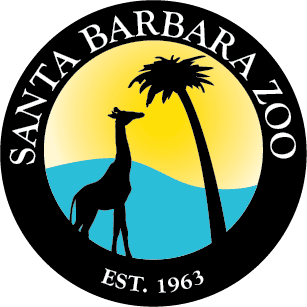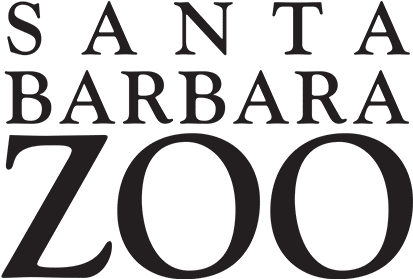Open daily from 10 AM to 4 PM
The Australian Walkabout welcomes you into the animals’ home, a 15,000-square-foot walkable habitat. Its natural design evokes a sense of open space and encourages a connection with nature. The immersive layout honors the land, animals, and traditions of the Aboriginal Australian culture. You’ll see kangaroos, an emu, and wallabies up close and experience the thrill of seeing these animals like never before! A new aviary featuring Australian birds is also part of the experience.
A walkabout is a powerful journey across land to a home in harmony with the environment. We’ve designed our Walkabout to allow you to share our animal’s environment…their home…and we ask that you respect their home as you would your own.
“Our purpose here is to observe, to learn, to grow, to love and then we return home.”
Aboriginal Australian Proverb

Western Grey Kangaroo
ABORIGINAL AUSTRALIAN NAME
Gangurru (GANG-guh-roo) from the Guugu Yimithirr language of far North Queensland
- The Zoo has three kangaroos: Max, Coolibah, and Aspen, all males.
- They are found in Southern Australia, primarily in grasslands near water with a nearby forest or woodland
- These marsupials are about 6.5 feet long from head to tail and can be between 6 and 7 feet tall
- They eat mostly grasses and shrubs
- Female Western grey kangaroos are sometimes called fliers or does, males are known as boomers, and the young are called joeys.
Bennett’s Wallaby
ABORIGINAL AUSTRALIAN NAME
Payathanima (pie-yah-THAN-eemah) in the Palawa language of Tasmania
- The Zoo has four wallabies, two females and two males. The females came from Trevor Zoo at Millbrook School, NY, and were born in October 2019, and the males came from Idaho Falls Zoo at Tautphaus Park were born in early 2020.
- They are found along the eastern coast of Australia and on the island of Tasmania, mostly in eucalyptus forests and open areas with nearby tree shelter
- These marsupials are about 2.2 to 3 feet tall and weigh 24 to 59 pounds
- They eat mostly grasses and herbs
- Though they are known for hopping, wallabies, kangaroos, and wallaroos can also crawl and swim!
Emu
ABORIGINAL AUSTRALIAN NAME
Karna-Nganyja (GAR-nah ny-ANG-ya) in the Nyikina language of the northwest region of Western Australia
- The Zoo has one emu, a male named Banjo who hatched at Ostrichland in Buellton, CA
- Native only to Australia, the emu lives throughout most of the continent
- Australia’s tallest native bird, reaching between 5.25 and 6.25 feet when standing
- Favorite foods are fruit, seeds, plant shoots, insects, small animals, and animal droppings
- These flightless birds can be more than 6 ft. tall and can sprint up to 31 miles per hour! They can also swim.
What’s the difference between emus and ostriches?
Emus
- Native to Australia
- Have three toes
- Are Australia’s tallest birds
- Males and females are difficult to distinguish as they both have deep brown feathers, emus form pair bonds during mating season
Ostriches
- Native to Africa
- Have two toes
- Are the world’s tallest birds
- Males have black feathers with white wings and tails and females have grey-brown feathers, male ostriches mate with multiple females who then share a nest
Laughing Kookaburra
ABORIGINAL AUSTRALIAN NAME
Guuguubarra (GOO-goo-BA-raah) in the Wiradjuri language of southwestern New South Wales.
- The Zoo has two adult kookaburras: Jane, a female hatched in April 2013 and Tarzan, a male hatched in May 2014
- Laughing kookaburras are native to woodlands and open forests in Australia, where they perch in large trees and nest in cavities of tree trunks and branches
- These birds are typically between 15 to 16.5 inches tall
- They eat insects, amphibians, small reptiles, and crabs
- As small carnivores, kookaburras play an integral role in the ecosystem by controlling small animal populations.
- Jane laid eggs at the end of May 2022, and the first chick hatched on June 17 and the second on June 19. Both chicks are female.
Tawny Frogmouth
ABORIGINAL AUSTRALIAN NAME
Kom-be-gaar (COM-bee-gah) in the Wardandi Noongar language of southwestern Australia
- The Zoo has two tawny frogmouths: female Sydney, hatched August 2011, came from San Antonio Zoo and male Stanley, hatched October 1997, came from Minnesota Zoo
- This adaptable bird inhabits a variety of habitats throughout Australia and Tasmania. They live in forests, scrubland, eucalyptus and acacia woodlands, and suburban parks.
- These birds are typically between 8 to 21 inches tall
- They eat insects, spiders, worms, slugs, and snails
- By day, frogmouths sleep on low tree branches. When disturbed, they stiffen their body, simulating a branch—a behavior called “stumping.”
Sulphur-Crested Cockatoo
ABORIGINAL AUSTRALIAN NAME
Kakalyalya (gah-gah-YAH-lah) from the Warlpiri Langauge of Central Australia
- The Zoo has one male sulphur-crested cockatoo named CJ, whose estimated hatch date is some time in 1985, and one male lesser sulphur-crested cockatoo named Reggie, whose estimated hatch date is September 1991
- Native to Australia, can be found in tropical and subtropical rainforests in the north, east, and western regions as well as in New Zealand and New Guinea. They are also found in the vast savannas of northern Australia.
- These birds are typically between 17 to 20 inches tall
- Preferred diet is seeds, nuts, fruits, blossoms, insects, and insect larvae
- These cockatoos are noisy birds! Their primary method of communicating is their screeching voices, but they also will raise and spread their yellow crests to show emotion.


